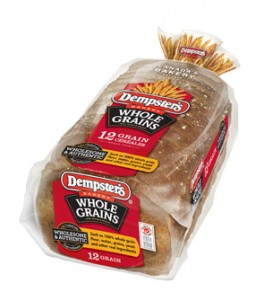The purpose of this blog is to track the amount of oil I have consumed in the past 24hrs. The oil consumed will be explored by reflecting on the role during the production, travel and packaging of the food ate.

| Production | Delivery | Packaging | |
| Dempster Whole Wheat bread | Main ingredient: uses 100% Canadian Wheat.Most of Canada’s wheat production originates from the Prairie provinces. Dempster’s does not specify which, but by speculating I would assume either Saskatchewan, Manitoba, or Alberta.Energy in Food Sector Data Survey by Annika Carlsson Kanyama found that on average the production of bread is 1.53-4.56 Mega Joules per kghttp://mmm.comuv.com/wordpress/wp-content/uploads/2010/06/Energy-use-in-the-food-sector-Carlsson-Kanyama-and-Fiest.pdfwhich is equivalent to using 0.075191004 kiloliters of oil http://www.unitconversion.org/unit_converter/energy-ex.html | Calgary, Alberta= 978km after processed | Plastic bag- video on how plastic bags are made compliments of discovery science channels.https://www.youtube.com/watch?v=8CfL5xl2N1QEssentially Dempsters bread is packaged in plastic bags, made from polyethylene. Greener Footprints describes how just “8.7 plastic shopping bags contains enough embodied petroleum energy to drive a car 1km.” See more at: http://www.greenerfootprints.com/plastic-bag-facts/#sthash.U4QJKFi0.dpuf |
| Fred Myer -Peanut Butter | Fred Myer uses Spanish Peanuts, grown mostly in Texas and Oklahoma. The production of peanuts for peanut butter is energy intensive as there are multiple processes in creating the final product. These include, harvesting, shelling, roasting, blanching, grinding. | Cincinnati, Ohio= 3,992 km after processed | Plastic container- I would assume similar steps in production as the plastic bag above. The thicker use of plastic to create the jar would however cause more of a carbon footprint. |
| Mandarin Oranges | Known to have been produced throughout southeastern china, could not figure out the specific location of distributer. However, for the purpose of this blog I will use southeastern china as a general reference point. 8535 km by barge. http://www.iwla.org/index.php?ht=a/GetDocumentAction/i/7799 claims barges use – 443 miles per gallon. An average 5334 miles would use 12 gallons of oil | Cardboard box |
|
Tim Hortons Coffee
I was thoroughly impressed with Tim Horton’s website and their environmental stewardship. Each page was accompanied with their slogan “Tim Hortons understands that changes in the environment need to be managed and embraces our responsibility to do our part” Furthermore, they make their manufacturing and distributive operations easy to find. Tim Hortons coffee is primarily grown in by roughly 2500 small scale farmers in central and south America by. The coffee beans are then shipped to roasting plants, located in Ancaster Ontario and Rochester New York and then later redistributed across the country via commercial truck fleets. In addition, Tim Hortons is taking on initiatives to improve their transportation efficiency. In 2012, they began the implementation of Electronic On Board Recorder to track the many facets of drivers daily operations (video can be seen here https://www.youtube.com/watch?v=f5CFzowGZ0s).
Nevertheless, I was still quite taken away by how much global travel was involved in getting my daily coffee fix. For me to have a Tim Hortons cup of coffee it would have to travel over 8000 or so km from South America to Ontario, and then by another 3000 km roughly across Canada. My cup of coffee would roughly have travelled 11000km. Just imagine the amount of oil I’m drinking.
| Production | Delivery | Packaging | |
| Primo Rotini | Made with Semolina from 100% Canadian whole wheat. | Pasta produced in Unico Plate located in Toronto. The ingredients for the pasta are most likely produced from 3 of the prairie provinces Alberta, Saskatchewan, and Manitoba. | Plastic bag, similar to how the Dempsters bread was packaged. |
| Hunts Pasta Sauce | Main ingredients being tomatoes are grown in Sunny Oakdale, California. The website also highlights how the tomatoes are steam peeled, unlike competitors who use chemicals. Furthermore, they use no preservatives and use 100% natural ingredients. | Processed and packaged in Omaha, NE USA. Tomatoes grown in Oakdale California. This creates quite the carbon footprint, as the tomatoes are taken 2655 km east to be processed and then redistributed throughout north America. In my case, they travelled a total 5539 km before reaching my plate. | Packaged in a can, much more eco-friendly than the previous plastic containers. Can be recycled. |
Overall, I am quite shocked at how much oil I consume. This assignment has allowed me to realize my dietary carbon emissions in more concrete terms. Our 21st century society has allowed us to neglect the effects of carbon emissions when we can drive up the street and purchase a box of mandarin oranges. Meanwhile, that box of oranges has traveled across the pacific ocean burning fossil fuels the entire way. Similarly, imagining the distance a simple pasta dinner makes before pouring it on my plate is astonishing. To think that Every Tim Horton’s Coffee I consume travels over 11000 km just in transportation. An attempt to live a 100 mile diet would be tough, but something I would like to try in the future.